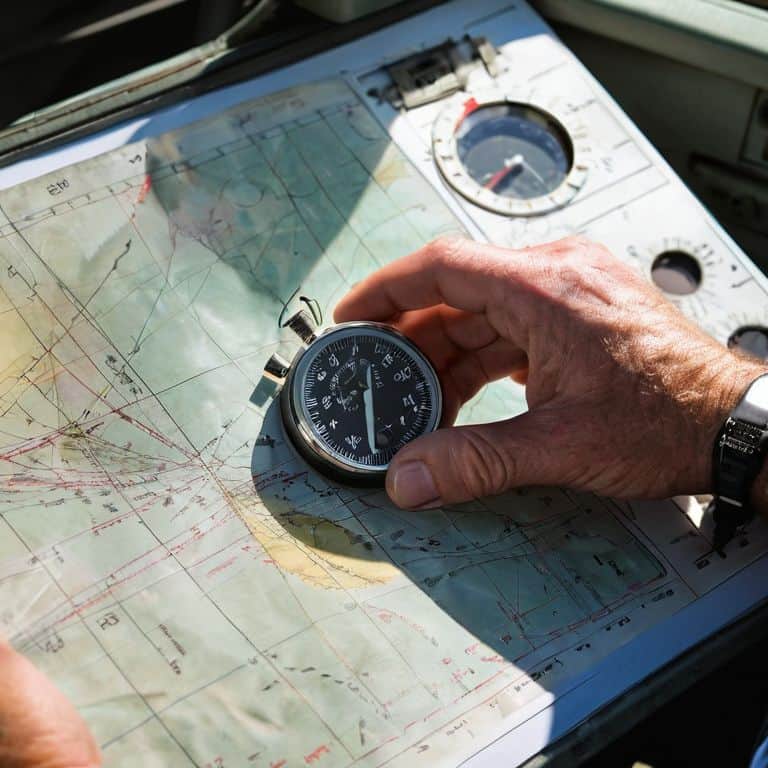I still remember my early days as a bush pilot in Alaska, when decoding a TAF report was a daunting task. Many of my colleagues believed it was a complex process that only experienced pilots could master, but I knew that with the right approach, anyone could learn to decipher these reports. As a flight instructor, I’ve seen many students struggle with TAF reports, but with a simple, step-by-step approach, they’re able to grasp the concepts quickly.
In this article, I’ll share my no-nonsense approach to decoding a TAF report, and provide you with practical advice on how to make sense of these reports. You’ll learn how to break down the abbreviations and numbers into _easy-to-understand_ components, and how to use this information to make informed decisions about your flight plans. By the end of this guide, you’ll be able to confidently decode TAF reports and improve your overall flying experience. My goal is to make this complex topic _accessible to everyone_, regardless of their flying experience, and I’m excited to share my knowledge with you.
Table of Contents
Guide Overview: What You'll Need

Total Time: 1 hour 15 minutes
Estimated Cost: $0 – $10
Difficulty Level: Intermediate
Tools Required
- Computer or Mobile Device (with internet access)
- Pen and Paper (for note-taking)
Supplies & Materials
- TAF Report Sample (for practice decoding)
- Meteorology Guide or Handbook (for reference)
Step-by-Step Instructions
- 1. First, let’s start by understanding what a TAF report is. A TAF, or Terminal Aerodrome Forecast, is a _weather forecast_ that provides pilots with essential information about the weather conditions they can expect at an airport. To decode a TAF report, we need to break it down into its individual components.
- 2. The first step in decoding a TAF report is to identify the airport for which the forecast is issued. This is usually indicated by a four-letter code, known as the ICAO airport code. For example, the ICAO code for Seattle-Tacoma International Airport is KSEA. We need to familiarize ourselves with these codes to accurately identify the airport.
- 3. Next, we need to look at the date and time of the forecast. TAF reports are typically issued four times a day and are valid for a period of 24 to 30 hours. The date and time are usually indicated in a format like “091230Z”, where “09” represents the day of the month, “1230” represents the time in Zulu format, and “Z” indicates Zulu time. We need to _convert this time to our local time zone_ to understand when the forecast is valid.
- 4. Now, let’s move on to the actual weather forecast. The TAF report will indicate the expected weather conditions, including _wind direction and speed_, visibility, and any precipitation or other weather phenomena. For example, a TAF report might say “WIND 27015KT”, which means the wind is coming from 270 degrees at a speed of 15 knots. We need to understand the units and abbreviations used in the report to accurately interpret the weather conditions.
- 5. Another important component of the TAF report is the forecast of cloud conditions. The report will indicate the type and height of clouds, as well as any _cloud layers_ that may be present. For example, a TAF report might say “BKN040”, which means there will be broken clouds at 4,000 feet. We need to _visualize the cloud conditions_ to understand how they may affect our flight.
- 6. The TAF report will also indicate any precipitation or other weather phenomena that may be expected. This could include _thunderstorms_, freezing rain, or other conditions that may impact flight operations. We need to identify any potential hazards and plan our flight accordingly.
- 7. Finally, we need to consider any _notices to airmen_ (NOTAMs) that may be relevant to our flight. NOTAMs are notifications of any changes or hazards that may affect flight operations, such as closed runways or airspace restrictions. We need to check for any NOTAMs that may impact our flight plan and adjust our plans accordingly.
- 8. To ensure we have accurately decoded the TAF report, let’s use a _checklist_ to review the information. This should include the airport, date and time, weather conditions, cloud conditions, precipitation, and any NOTAMs. By carefully reviewing this information, we can confirm our understanding of the TAF report and plan a safe and successful flight.
Decoding a Taf Report

As we dive deeper into the world of TAF reports, it’s essential to understand the importance of accuracy in aviation weather forecasting tools. A small mistake in decoding a TAF report can lead to significant errors in flight planning. To avoid this, I recommend using a taf report weather symbols guide to help you decipher the various codes and symbols used in the report.
When it comes to meteorology for pilots, it’s crucial to stay up-to-date with the latest weather forecasting tools and techniques. Aerodrome weather forecast explanation is a critical aspect of flight planning, and understanding TAF reports is a key part of this process. By using taf report decoding software, you can quickly and easily decode TAF reports and make informed decisions about your flight.
In addition to using decoding software, it’s also important to have a good understanding of understanding taf report codes. This involves being able to recognize and interpret the various codes and symbols used in the report, as well as understanding the context in which they are used. By combining this knowledge with the use of decoding software, you can become proficient in decoding TAF reports and make more informed decisions about your flight plans.
Cracking Taf Codes Simplified
Now that we’ve walked through the steps of decoding a TAF report, let’s simplify the process even further. Think of it like navigating through a familiar airspace – once you know the landmarks, it’s a breeze. We can break down the code into manageable chunks, focusing on the most critical elements: wind direction and speed, visibility, and weather conditions. By prioritizing these key factors, you’ll be able to quickly grasp the essential information in a TAF report.
As you practice decoding TAF reports, you’ll start to recognize patterns and abbreviations, making the process more efficient. It’s similar to how a pilot develops a pre-flight routine – with repetition and practice, it becomes second nature. By simplifying the TAF code and focusing on the fundamentals, you’ll be better equipped to make informed decisions about your flight plans, ensuring a safe and successful journey.
Taf Weather Symbols Guide
Now that we’ve simplified the process of cracking TAF codes, let’s dive into the weather symbols that are used within these reports. These symbols are essentially a shorthand way of describing various weather conditions, such as clouds, precipitation, and wind. By familiarizing yourself with these symbols, you’ll be able to quickly decipher the information contained in a TAF report.
I like to think of these symbols as navigation markers, guiding you through the report and helping you understand the bigger picture. For example, the symbol “BKN” indicates a broken cloud layer, while “SHRA” signifies showers in the vicinity. By recognizing these symbols, you’ll be able to paint a mental picture of the current weather conditions, making it easier to plan your flight and stay safe.
5 Essential Tips for Decoding TAF Reports with Confidence

- Start by familiarizing yourself with the basic structure of a TAF report, including the airport identifier, date and time, and forecast period
- Understand the different types of weather phenomena that can be reported in a TAF, such as precipitation, wind, and visibility, and know how to interpret the corresponding symbols and codes
- Practice decoding TAF reports for different airports and weather conditions to build your skills and increase your comfort level with the format
- Use online resources and tools, such as TAF decoders and weather charts, to help you interpret and understand the information in a TAF report
- Always consider the big picture and the context in which the TAF report is being used, taking into account factors such as flight planning, weather trends, and air traffic control instructions
Key Takeaways for Decoding TAF Reports
Understand the basic structure of a TAF report, including the airport identifier, date and time, and forecast period, to lay the foundation for further analysis
Learn to recognize and interpret common TAF weather symbols and abbreviations, such as wind direction, speed, and gusts, to improve your ability to read and understand TAF reports
Apply a step-by-step approach to decoding TAF reports, breaking down complex information into manageable parts, to increase confidence and accuracy in your pre-flight planning and decision-making
Decoding with Clarity
Decoding a TAF report is like navigating through a familiar sky – once you understand the signs and symbols, the whole landscape opens up, and what seemed complex becomes your guiding compass.
Daniel Sato
Conclusion: Mastering the Art of Decoding TAF Reports
Decoding a TAF report is not just about understanding a bunch of abbreviations and numbers; it’s about being able to make informed decisions as a pilot. Throughout this guide, we’ve broken down the process into manageable steps, from understanding the basics of TAF reports to cracking the code on weather symbols. By following these steps and practicing your skills, you’ll become more confident in your ability to decode TAF reports and make safer, more informed flight decisions. Remember, the key to mastering TAF reports is to take it one step at a time, and to always refer to your trusty guide when you need a refresher.
As you continue on your journey to become a skilled pilot, keep in mind that knowledge is power. The more you know about decoding TAF reports, the better equipped you’ll be to handle any situation that comes your way. Don’t be afraid to reach out for help when you need it, and always be willing to learn and improve your skills. With practice and dedication, you’ll be able to decode TAF reports with ease, and you’ll be well on your way to becoming a master aviator. So, keep calm, stay focused, and remember that the sky’s the limit – literally.
Frequently Asked Questions
What does a typical TAF report look like and how do I identify the different sections?
A typical TAF report is a series of codes and abbreviations. Let’s break it down: it starts with the airport identifier, then the date and time, followed by the forecast period, wind, visibility, and weather conditions. Think of it like a pre-flight checklist – each section gives you vital info to plan your flight.
How do I decode the wind direction and speed in a TAF report?
Decoding wind direction and speed in a TAF report is straightforward. Look for the ‘WD’ and ‘WS’ abbreviations, which stand for wind direction and speed, respectively. The number before ‘WD’ indicates direction in degrees, and the number after ‘WS’ shows speed in knots. For example, ‘WD360 WS10’ means a wind direction of 360 degrees (north) at 10 knots.
Are there any online tools or resources that can help me practice decoding TAF reports?
For practice, I recommend checking out online TAF decoders and simulator tools, such as the FAA’s TAF decoder or online aviation weather platforms. These resources allow you to input a TAF report and see it broken down into easy-to-understand components, helping you sharpen your skills in a realistic and interactive way.



